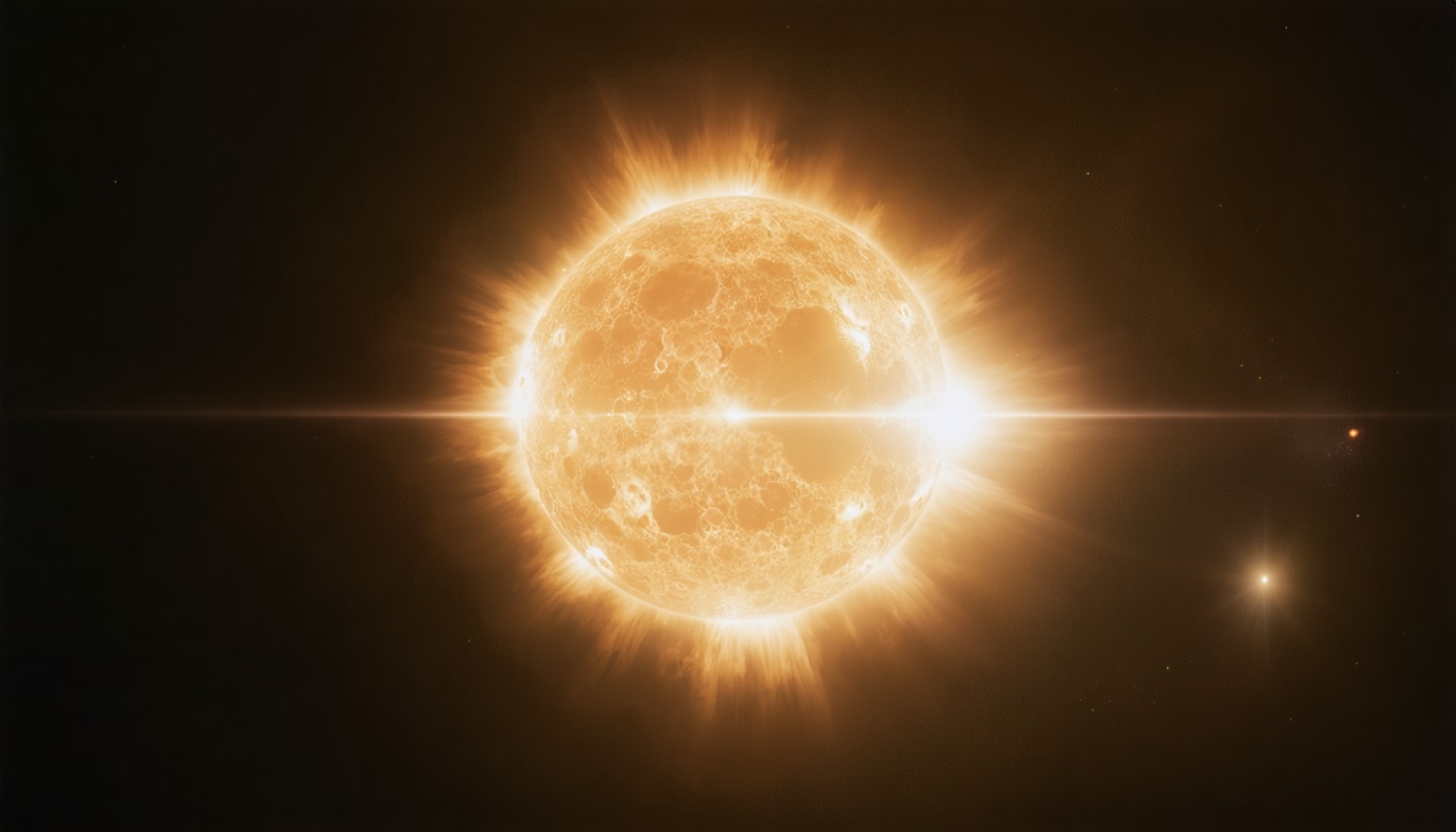- Eos is a newly discovered, massive molecular cloud located 300 light-years from Earth.
- It spans 300 light-years and is 5,500 times the mass of the sun, yet it remains invisible to the naked eye.
- Astronomers used faint ultraviolet emissions of molecular hydrogen for its discovery, instead of carbon monoxide.
- Despite its size, Eos has not shown recent star formation activity and may lack sufficient density to do so.
- It is expected to dissipate in about 6 million years, emphasizing the impermanence of cosmic structures.
- The discovery challenges astronomers to rethink the composition of our galactic neighborhood.
Imagine a vast cosmic entity, a 300-light-year neighbor to our solar system, quietly looming in the backdrop of the universe, yet undetected until now. This is Eos, an immense, crescent-shaped molecular cloud, a behemoth composed of gas and dust, roughly 5,500 times the mass of the sun. Named after the Greek goddess of dawn, Eos has just been brought to light by astronomers using innovative methods to scan the heavens.
Eos’s proximity to Earth—only about 300 light-years away—is not its most startling feature. The cloud’s elusive nature, despite its size, owes itself to its surprisingly low levels of carbon monoxide—traditionally the roadmap for astronomers seeking such clouds. Instead, researchers turned to look for molecular hydrogen, identified through its faint ultraviolet emissions, paving the way for this groundbreaking discovery.
Revealing itself as potentially the largest structure in Earth’s night sky, Eos hovers towards the constellation of Corona Borealis. Yet, it remains invisible to the naked eye, leaving only the imagination to span the forty full moons it could ostensibly cover. Its find challenges researchers to reconsider the cosmic materials lurking in our own galactic neighborhood.
Intriguingly, while clouds like Eos are often stellar cradles, analysis indicates that it hasn’t spawned stars in recent history and might lack the density to ever do so. This insight offers a fresh perspective on stellar motherhood—or the lack thereof—posing questions about star formation in such cosmic arenas.
Despite its gargantuan invisible embrace, Eos is ephemeral. Astronomers estimate that in about 6 million years, the cloud will dissipate, leaving no trace of its former grandeur. This evanescent giant presents a fleeting opportunity to understand more about the cosmic cogs driving our galaxy’s mechanical chronometers.
Eos quietly illustrates the vastness yet impermanence of our universe, reminding us that the search for knowledge continues, as does our quest to explore these colossal cosmic entities. In its silent watch, Eos imparts a lesson: the universe is filled with hidden giants, waiting to be unveiled, their stories ever whispering across the cosmos.
Unlocking the Secrets of Eos: What This Cosmic Discovery Reveals About Our Universe
Introduction
Imagine a cosmic entity so vast it challenges our understanding of the universe—yet invisible to the naked eye. This is Eos, a colossal molecular cloud recently unveiled by astronomers. Located just 300 light-years away, Eos offers a unique opportunity to explore cosmic phenomena and reconsider stellar formation theories.
Deeper Insights into Eos
Eos, named after the Greek goddess of dawn, is a crescent-shaped molecular cloud composed predominantly of gas and dust. Key to its discovery was observing molecular hydrogen through its ultraviolet emissions—a method less traditional than the common use of carbon monoxide tracking. This achievement reflects advancements in astronomical techniques and highlights the potential for uncovering similar entities.
Features and Specifications:
– Mass: Approximately 5,500 times that of our Sun.
– Size: Could cover a staggering space equivalent to forty full moons in the night sky.
– Location: Toward the constellation of Corona Borealis.
– Life Span: Expected to dissipate in roughly 6 million years.
Uncommon Real-World Use Cases
While Eos may not have immediate practical applications, identifying such molecular clouds revolutionizes how we understand cosmic structures:
1. Cosmic Mapping: Eos challenges conventional mapping techniques, demonstrating the need for novel methods in understanding galactic formations.
2. Astronomical Techniques: The discovery underscores the efficacy of leveraging ultraviolet emissions for future cosmic explorations.
Market Forecasts and Industry Trends
Advancements in detecting molecular clouds like Eos influence trends in astronomical research and technology:
– An increasing investment in telescopic and sensor technology capable of detecting faint molecular emissions.
– Growing interest in collaborative international astronomical projects, enhancing our cosmic understanding.
Challenges and Limitations
Despite Eos’s monumental discovery, this cosmic phenomenon poses several challenges:
– Detection Difficulty: Low carbon monoxide levels make similar entities hard to discover with traditional methods.
– Data Interpretation: Translating ultraviolet emissions into practical data requires specialized knowledge and technology.
Pros & Cons Overview
Pros:
– Enhanced Understanding: Contributes to our knowledge of cosmic entities and star formation.
– Technological Advancement: Pushes the boundaries of astronomical detection techniques.
Cons:
– Complex Data Collection: Requires sophisticated equipment and expertise.
– Transient Nature: Being ephemeral, opportunities to study Eos are limited.
Future Predictions
Eos’s discovery signifies a paradigm shift in space observation techniques:
– Increased Discoveries: Expect more unseen giant molecular clouds to be identified with refined methods.
– Revolutionized Star Formation Theories: Eos could reshape our understanding of conditions necessary for star genesis.
Actionable Recommendations
1. Stay Informed: Follow astronomy research to catch updates on such discoveries.
2. Innovate: Consider investing in tech advancements focusing on non-traditional emissions for future explorations.
3. Engage with Cosmic Studies: Keep track of international collaborations in the field.
Conclusion
The unveiling of Eos is a reminder of the unseen cosmic giants hiding across the universe. As technology progresses, the possibilities for discovery are limitless, offering deeper insights into our galactic neighborhood and beyond.
For further insights into cosmic phenomena and cutting-edge astronomical research, visit NASA.
